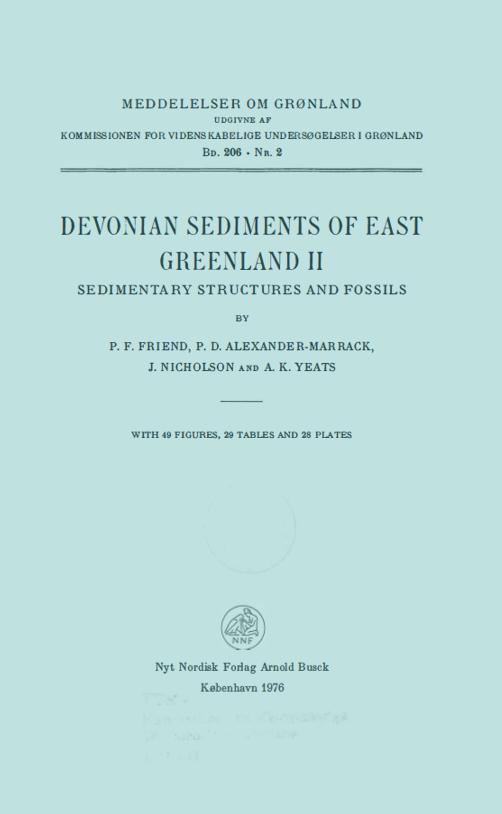Devonian Sediments of East Greenland IV. The Western Sequence, Kap Kolthoff Supergroup of the Western Areas.
Résumé
A 2 km succession of upper Middle and Upper Devonian fluvial conglomerates and sandstones outcrops along a north-south distance of 160 km, and forms the western sequence of the Devonian outcrop area of East Greenland.
The thickness of the conglomerates varies considerably along the western margin, and this appears to represent the growth of distinct coarse grained fans. These coarse fluvial deposits range up to 1000 m in thickness. Breccias are locally present on the basal unconformity, sometimes including clasts up to 15 m long, that appear to have slipped and rolled from nearby outcrops of basement (pre-Devonian) sediment. Although some of the breccias were certainly deposited from water, others may have accumulated from debris flows. A number of ravines and valleys eroded in the basement, are preserved with plugs of breccia or conglomerate. Thin limestone and siltstone units occur, also close to the unconformity, and are thought to have formed in lake hollows between the highgradient alluvial deposits and the basement topography.
Most of the outcrops of the area are of rather similar sandstone sequences. These have been analysed, particularly using our multivariate analytical technique, described in number 1 of this volume. Palaeocurrents and lithology show the presence of a number of distinct sandstone bodies, hundreds of metres thick, and kilometres in lateral extent. These distinctive bodies were deposited by broadly eastward flowing river fan systems at the margin of the Devonian outcrop area. A southward flowing (axial) river system deposited sands further east, in the centre of the basin. The fan sandstone bodies are characterised by cycles, 20 to 100 m thick. In the central parts of the fans, these cycles consist of an upwards increase in the proportion of flat bedding to cross-bedding, although the medium sand grade is relatively constant. The edges of the fan bodies are marked by very-fine sand grade accumulations, interpreted as the fills of hollows between fans, or between a fan and the basement topography. Five of these fan sandstone bodies are green, and one is red and we suggest that this reflects different hydrological conditions.

Téléchargements
Publiée
Comment citer
Numéro
Rubrique
Licence
Coypyright by the authors and the Commision for Scientific Research in Greenland. No parts of the publications may be reproduced without the consent of the copyright holders.

